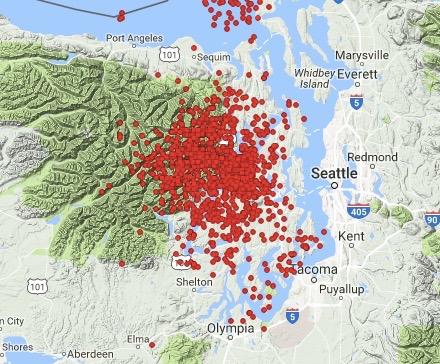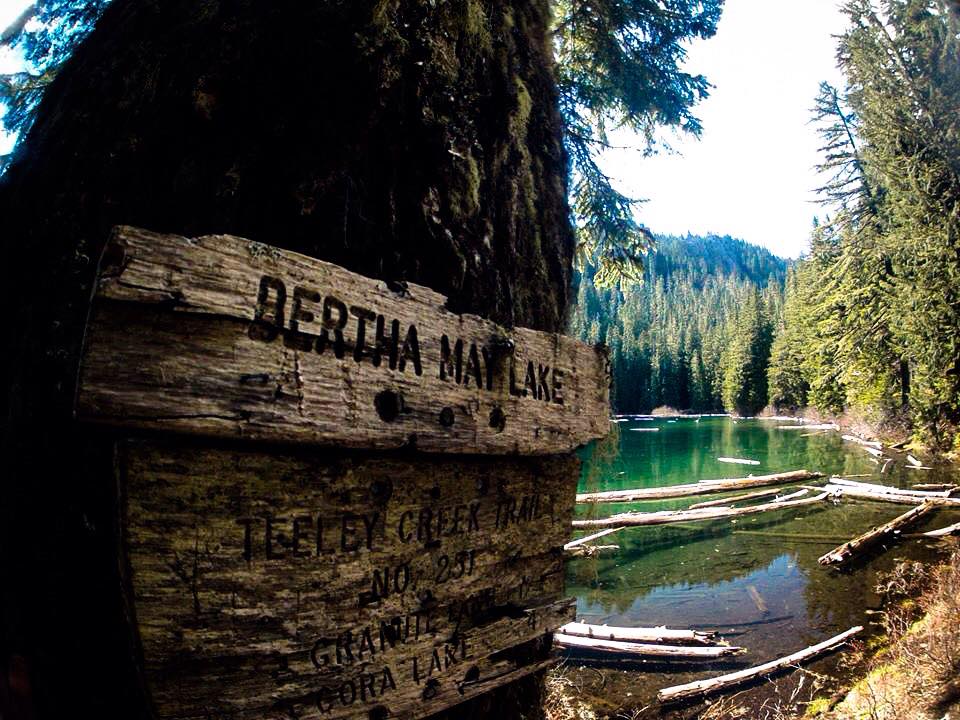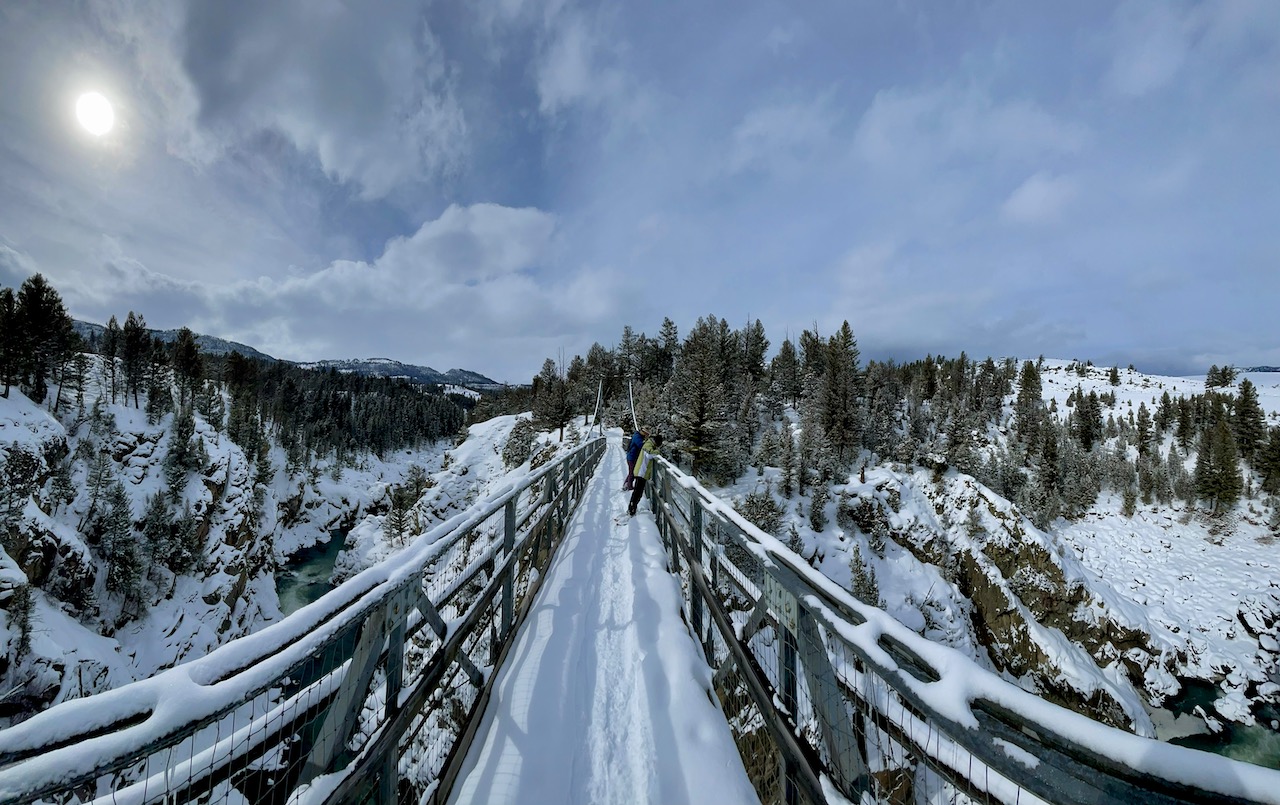On the evening of February 22nd, 2017, residents of the South Puget Sound were jostled by a 4.2 earthquake centered on the Kitsap Peninsula. With a bang being heard before the shock waves arrived, the quake jostled everyone’s nerves a little, while no damage or landslides occurred. For those keeping record, this was the largest earthquake in the Puget Sound since December of 2015. For most who felt it, it was just another small quake out here in the PNW. While everyone has moved on, few realize that the ground has been shaking in the region for the entire month, with nearly 2,000 small earthquakes moving the Puget Sound since February 1st and 1,000 in the last week.
In the words of the Hitchhikers Guide to the Galaxy, “Don’t Panic.”
We were curious about the numerous earthquakes in the region, so The Outdoor Society emailed a staff member at the United States Geological Survey (USGS) during the last earthquake swarm event and got some information that should help put everyone at ease. While CBC in Canada may be hyping the fear, there are some important things you should know about the small quakes.
In our conversation with the USGS, we found out that every 14 months or so, the Puget Sound and Salish Sea, located in the Cascadian subduction zone, experiences what seismologists call a “slow slip” phenomenon. The earthquakes shaking the region during the slow slip are not large, and usually occur without any press or fanfare. In fact, roughly 99.99% of these quakes have been under magnitude 2.0, with only a few being felt in the entire region. The quakes are part of what is called an earthquake swarm and a Slow Slip Episode. The Slow Slip Episodes and Swarms are actually quite common in the region. Around Southern British Columbia and Northern Washington State, they have been occurring every 14 months or so since at least the 1990s.
It is important to note, as the map indicates, that these small events are part of a much bigger underlying process. Altogether, the seismicity marks where slow slip on the subduction zone plate interface is occurring, and the total amount of slip (a few centimeters) over such a large area can equate to a magnitude ~6.5. It just happens slowly enough that these low-level tremors are the only seismic waves generated.
– Aaron Wech of the USGS during the earthquake swarm of 2015-16
Since these quakes are part of a known pattern, the news about the frequency or number should not scare anyone. The quakes continue to appear to be part of the natural event that occurs approximately every 14 months. Instead of building up pressure for one large quake, our swarms and slow slips are thought to be relieving pressure on the regional tectonic plates. As Aaron Wech of the USGS shared, the total amount of pressure released from the Slow Slip can equate to a magnitude 6.5. Please read Official Article from the USGS about the tremors here.
On February 23rd, there were 221 epicenters around the Olympic and Kitsap Peninsulas. On the 22nd, there were 237 in the same region, with another 179 coming on the 21st. Since January 1st, there have been over 4,000 small quakes in the Cascadian subduction zone, most of which nobody outside of the USGS heard about or cared about. See the map of the small quakes here.
The Slow Slip swarms of earthquakes that are hitting Vancouver Island and the waters of the Pacific Northwest is part of life along and around tectonic plates. They should not cause fear or panic, but instead serve as a reminder that we live in an area that can (and will) have numerous earthquakes. Right now, the plates are sliding fine, working off stress instead of bottling it all up for one big episode. Personally, I hope that this pattern keeps up and continues to possibly delay “The Big One” that we have been hearing about for decades. That being said, please remember to always be prepared in case there is a larger slip and we do have strong earthquake.
Might as well be ready, right?



